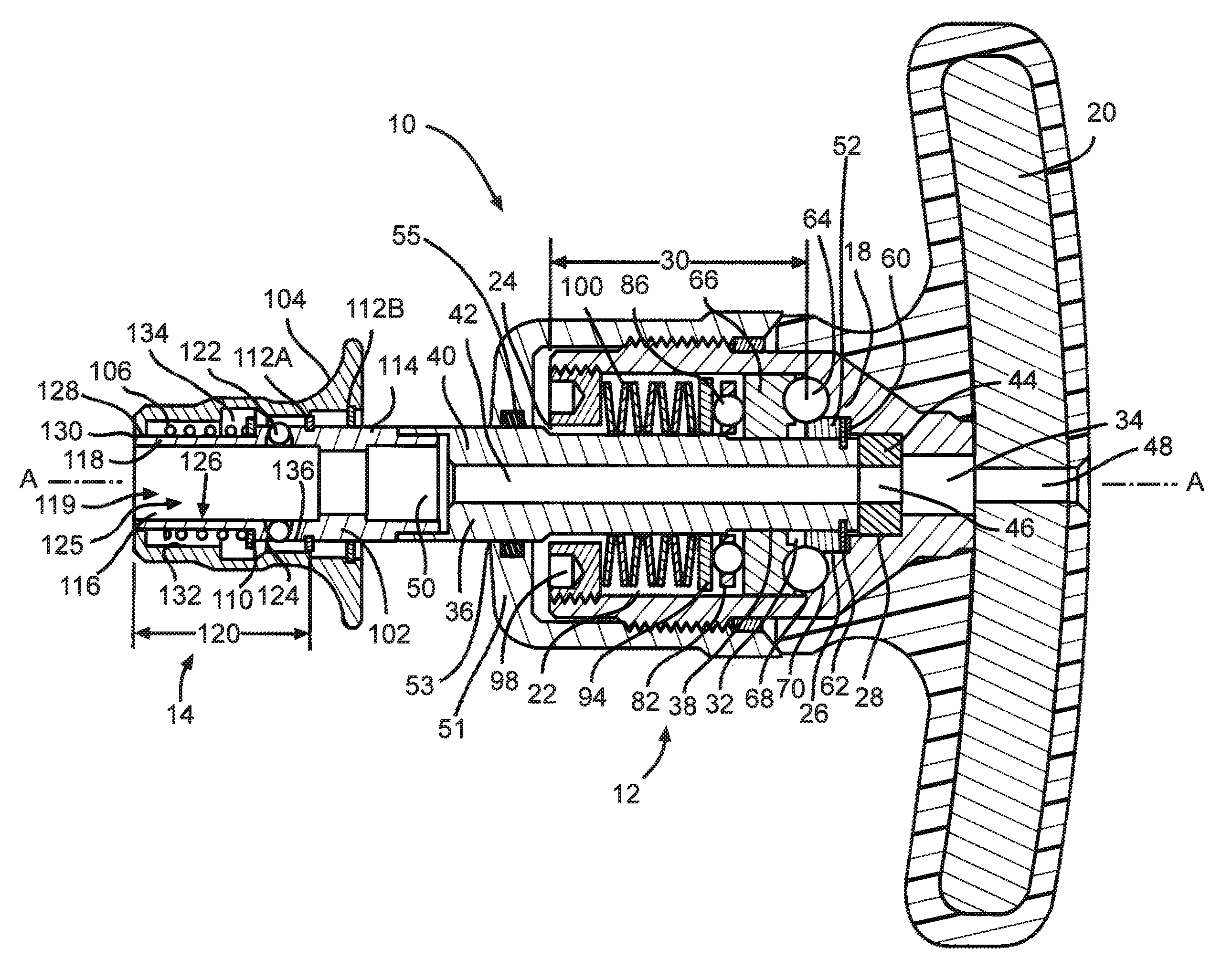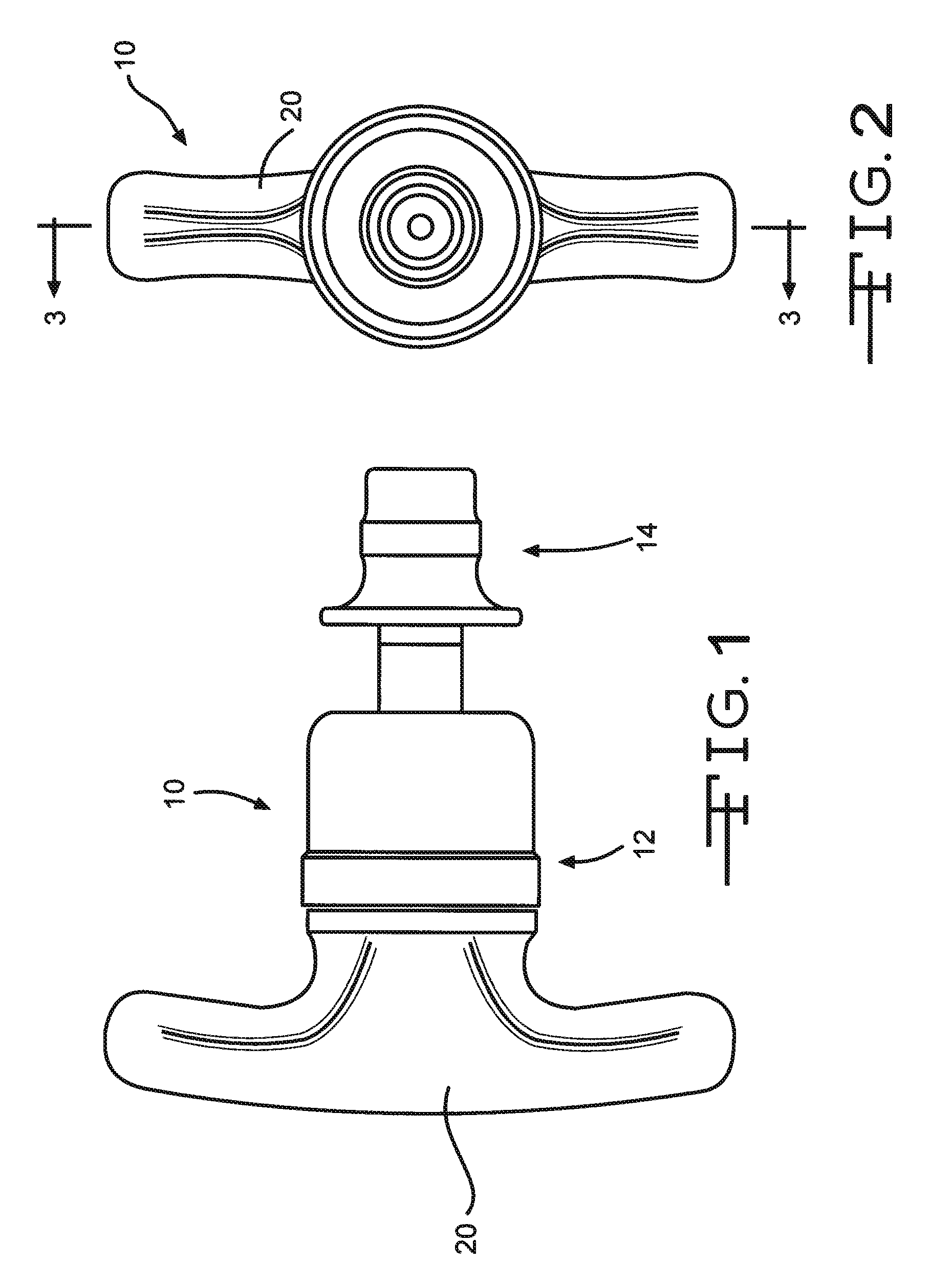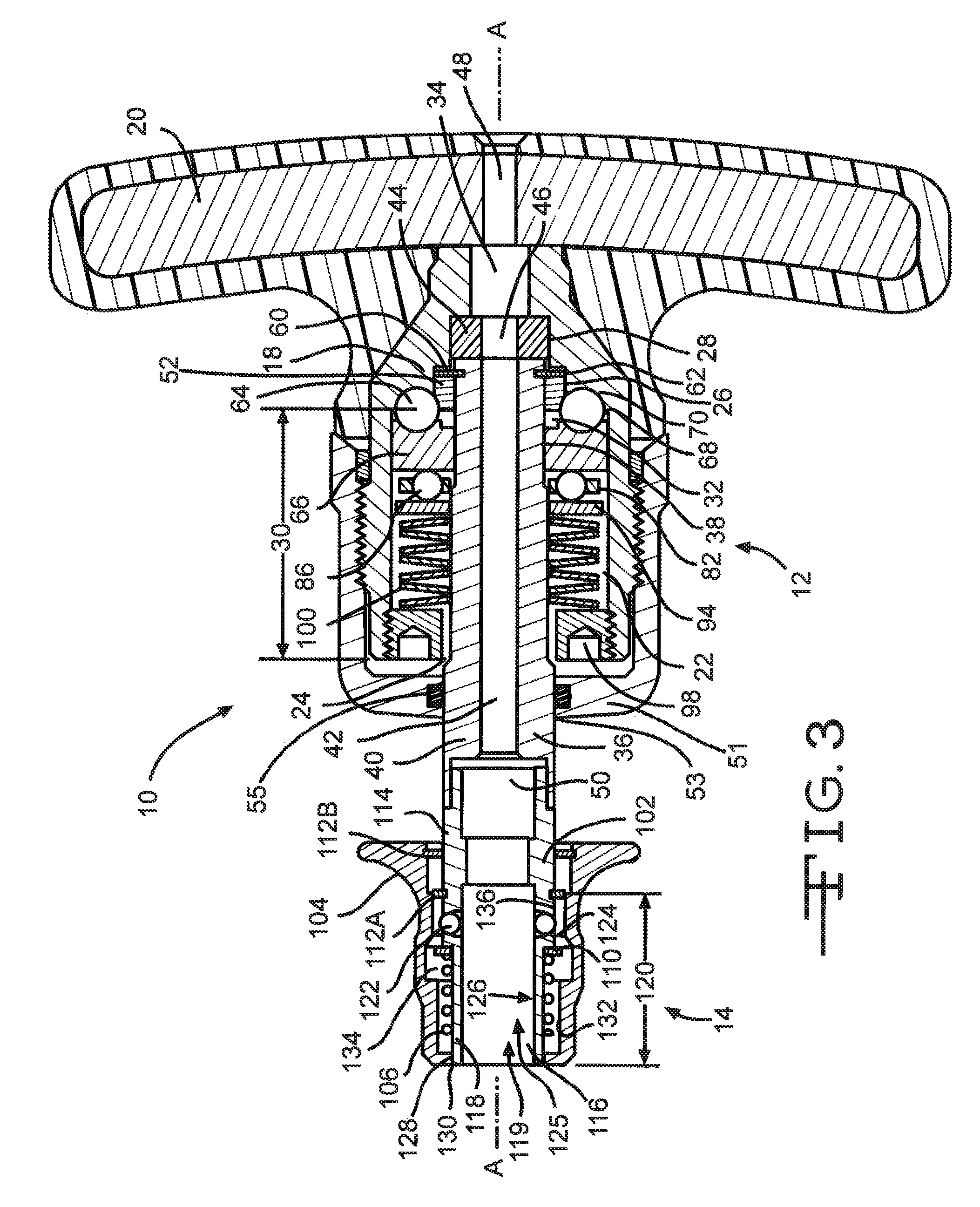Torque limiting mechanism with lock bushing
a technology of torque limiter and lock bushing, which is applied in the field of surgical tools, can solve the problems of inaccurate torque output, increased mechanical wear of the device, and frictional interference within the device, and achieve the effects of improving accuracy, reducing lateral movement of components, and reducing wear
- Summary
- Abstract
- Description
- Claims
- Application Information
AI Technical Summary
Benefits of technology
Problems solved by technology
Method used
Image
Examples
Embodiment Construction
[0020]Referring now to the figures, FIGS. 1-5, 5A and 6-8 illustrate embodiments of a torque limiter device assembly 10 of the present invention and associated components. The device assembly 10 comprises a torque limiter device 12 and an adapter 14 connected therebetween. The torque limiter device 12, having a distal end portion spaced apart from a proximal end portion, further comprises a torque limiting mechanism 16 therewithin. The torque limiting mechanism 16 resides within a housing 18 of the device 12. A handle portion 20 is fluidly connected to the proximal end of the housing 18 of the device 12.
[0021]As shown in FIG. 3, the housing portion 18 has a first cavity 22 with a first cavity opening 24 that extends from the distal end of the housing 18. The first cavity 22 transitions into a second cavity 26, and the second cavity 26 further transitions into a third cavity 28. The second cavity 26 is proximal of the first cavity 22 and the third cavity 28 is proximal of the second ...
PUM
 Login to View More
Login to View More Abstract
Description
Claims
Application Information
 Login to View More
Login to View More - R&D
- Intellectual Property
- Life Sciences
- Materials
- Tech Scout
- Unparalleled Data Quality
- Higher Quality Content
- 60% Fewer Hallucinations
Browse by: Latest US Patents, China's latest patents, Technical Efficacy Thesaurus, Application Domain, Technology Topic, Popular Technical Reports.
© 2025 PatSnap. All rights reserved.Legal|Privacy policy|Modern Slavery Act Transparency Statement|Sitemap|About US| Contact US: help@patsnap.com



